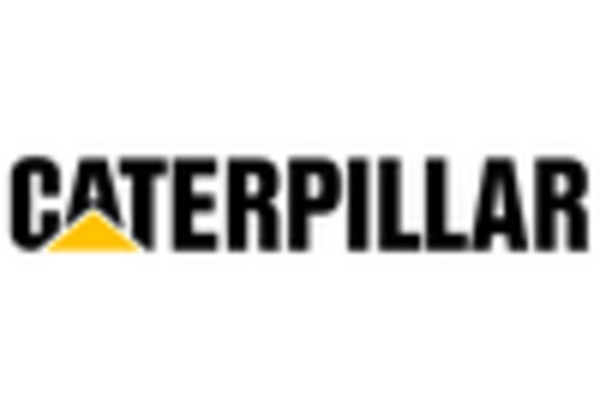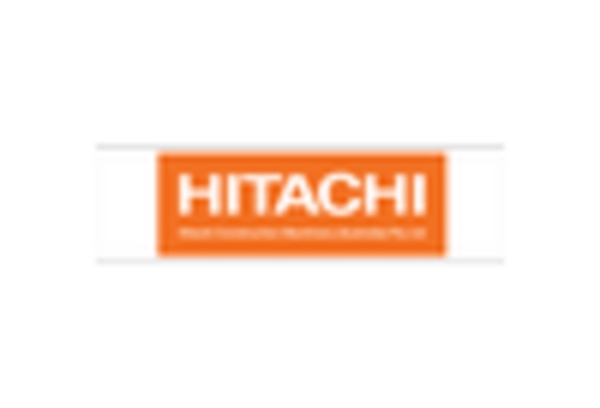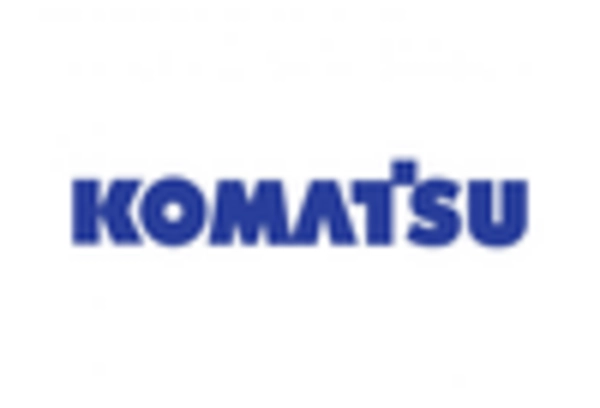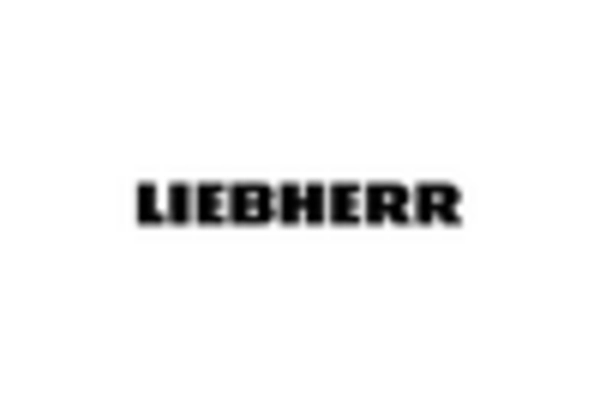Growing E-commerce Sector
The loader market is significantly influenced by the rapid expansion of the e-commerce sector in the US. As online retail continues to grow, logistics and warehousing operations are increasingly reliant on efficient material handling equipment, including loaders. In 2025, the e-commerce market is projected to reach $1 trillion, necessitating the need for advanced loaders to streamline operations. This growth in e-commerce logistics is likely to drive demand for loaders that can handle diverse materials and adapt to various warehouse environments. Consequently, the loader market is poised to benefit from this trend, as companies invest in modern equipment to enhance their operational efficiency.
Labor Shortages in Construction
The loader market is being shaped by the ongoing labor shortages in the construction industry. As companies struggle to find skilled labor, there is a growing reliance on machinery to compensate for the workforce gap. In 2025, it is projected that the construction sector will face a labor shortage of approximately 1 million workers. This situation is prompting construction firms to invest in loaders that can perform tasks traditionally handled by human labor. Consequently, the loader market is likely to see increased sales as companies prioritize automation and efficiency to maintain productivity levels despite workforce challenges.
Rising Infrastructure Investments
The loader market in the US is experiencing a notable boost due to increased investments in infrastructure projects. Government initiatives aimed at enhancing transportation networks, bridges, and public facilities are driving demand for loaders. In 2025, the US government allocated approximately $1 trillion for infrastructure development, which is expected to create a surge in loader purchases. This trend indicates a robust growth trajectory for the loader market, as construction companies seek efficient machinery to meet project deadlines. Furthermore, the emphasis on modernizing aging infrastructure is likely to sustain this demand over the coming years, positioning the loader market as a critical component in the construction sector.
Technological Integration in Equipment
The loader market is witnessing a transformation driven by the integration of advanced technologies into machinery. Innovations such as telematics, automation, and smart sensors are enhancing the efficiency and productivity of loaders. In 2025, it is estimated that around 30% of loaders sold in the US will feature advanced technological capabilities. This trend suggests that manufacturers are increasingly focusing on developing loaders that not only perform traditional functions but also offer data-driven insights for operators. As the loader market evolves, the adoption of these technologies is likely to attract a broader customer base, including those seeking to optimize their operations through enhanced machinery.
Environmental Regulations and Compliance
The loader market is increasingly influenced by stringent environmental regulations in the US. As regulatory bodies enforce stricter emissions standards, manufacturers are compelled to develop loaders that comply with these requirements. In 2025, it is anticipated that around 40% of new loaders will be equipped with eco-friendly technologies, such as electric or hybrid engines. This shift towards compliance not only addresses environmental concerns but also aligns with the growing demand for sustainable practices in construction. As a result, the loader market is expected to evolve, with manufacturers focusing on producing loaders that meet both performance and environmental standards.

















Leave a Comment